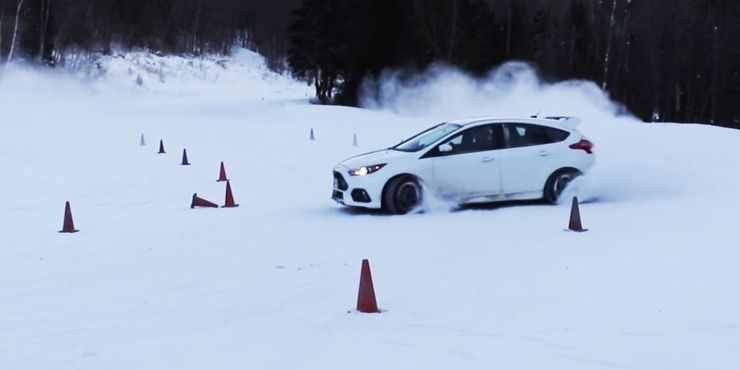
Driving with ABS on snow and ice
The anti-lock braking system, or ABS, is designed to help you maintain control of your vehicle in emergency stop scenarios. Most modern cars have ABS as standard. It prevents the wheels from locking up, allowing you to turn the wheels and steer the car if you start skidding. You will know that the ABS is on by turning on the indicator on the dashboard with the word "ABS" in red.
Many drivers have a false sense of confidence that they can go faster and corner faster even in inclement weather because they have ABS. However, when it comes to snow or ice, ABS can be more harmful than helpful. Read on to understand how ABS is supposed to work, how effective it is in snow conditions, and how to brake safely on snow or ice.
How does ABS work?
ABS bleeds the brakes automatically and very quickly. This is done to detect a skid or loss of control of the vehicle. ABS detects brake pressure when you apply the brake and checks to see if all wheels are spinning. ABS releases the brakes on the wheel if it locks up until it starts spinning again, and then applies the brakes again. This process continues until all four wheels stop spinning, telling the ABS that the car has stopped.
The anti-lock brake system does its job and kicks in when your wheels lock up on pavement, releasing the brakes until they function properly. On snow or even ice, ABS handling requires a bit more skill.
How to stop with ABS on snow and ice
Snow: As it turns out, ABS actually increases stopping distance on snow-covered surfaces as well as other loose materials such as gravel or sand. Without ABS, locked tires dig into the snow and form a wedge in front of the tire, pushing it forward. This wedge helps stop the car even if the car skids. With ABS, a wedge never forms and skidding is prevented. The driver can regain control of the vehicle, but the stopping distance actually increases with the ABS active.
In snow, the driver must stop slowly, gently depressing the brake pedal to prevent the ABS from working. This will actually create a shorter stopping distance than hard braking and ABS activation. A softer surface requires softening.
Ice: As long as the driver does not apply the brakes on partially icy roads, ABS assists the driver in both stopping and driving. The driver only needs to keep the brake pedal depressed. If the entire road is covered with ice, the ABS will not work and will behave as if the vehicle has already stopped. The driver will need to bleed the brakes to stop safely.
Drive safely
The most important thing to remember when driving in snow or icy conditions is to drive with caution. Find out how your car performs and how it slows down in this kind of weather. It can be helpful to practice stopping in a parking lot before entering snowy and icy roads. This way you will know when to avoid ABS and when it is appropriate to rely on its activation.
